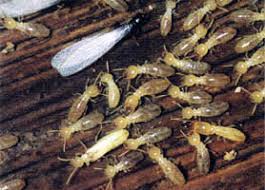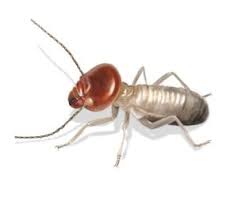
Little Known Facts About Termite Control Pipe System.
Dont enable climbing plants or bushy gardens to grow against the structure - Climbing plants growing against the side of the construction of the property provide termites with entry undetected. The roots of some plants can also penetrate the foundations of your house allowing termites access that's extremely tough to locate.
DO NOT plant trees which are notorious for sending follicles under slabs near the home. .
Eliminate dead trees or stumps - Dead trees and stumps are ideal sites for termites to nest in. Remove these or have them treated to decrease the risk to your house.
Unknown Facts About Termite Control Plans
Roofs: Broken tiles create moisture that attracts termites, and can provide a gateway inside. Prevent termites by making sure the roof is dry insidecracks and breaks are repaired.
Air conditioner unit: Â Termites prefer moist environments, and that's what air conditioning units create. Ensure the moisture release of air conditioning units are away from the foundations of your home and get rid of any puddles, condensation and other moisture build-ups.
The 3-Minute Rule for Termite Control Pipe System
Wooden beams: Check regularly for termite damage by pressing against the timber to assess if it feels spongy.

What Does Termite Control Plans Do?
Wooden flooring: Being close to the ground wooden floors can act as a stepping stone for subterranean termites into the rest of your home. Carry out regular inspections for termite activity. When building a new house lay down a termite barrier.
Wooden furniture: Keep furniture away from walls. Opt for things made of other materials such as metal. Put wooden furniture outside in the sun if you find signs of termites.
Cupboards: Regularly inspect your cupboards for termite activity. If you're worried, phone professional pest specialists!
Facts About Termite Control Plans Revealed
Orange oil is not new. It's been around for nearly 20 years, but has only recently been promoted since the'wonder drug' for termites. Western has orange oil as part of our arsenal of treatment strategies, but we seldom recommend it since it is not the ideal solution in many situations.
Bottom line: if orange oil worked as promoted by some companies, wouldn't each company in the termite industry be using orange oil for all their drywood termite treatments
Termites are the most important wood-destroying structural pests in the southern United States. According to some estimates, over $2 billion have been spent annually in the United States controlling or preventing termite infestations. In North Carolina, our main issue is with subterranean termites, i.e., termites which normally live below ground and might move up into a construction where they cause damage.
They are wingless now but started out having wings and"swarming" from their original residence or nesting site where they developed. The queen can lay thousands of eggs every year. And continues to do so for approximately five years. Additionally, there are soldier termites which have big heads outfitted with large mandibles ("jaws"). review
Top Guidelines Of Termite Control Powder
The majority of the termite colony consists of thousands of whitish employees who serve various functions. Some employees maintain the nesting site and look after the queen and the newly hatching immatures (sometimes called"larvae"). Other workers go out and actively forage (hunt ) for food. The foraging employees are the ones that we generally find infesting timber.
Depending on the species of termite, a mature colony can contain 200,000 to 2,000,000 workers, although many colonies contain as few as 50,000-60,000. Studies also have shown that termites from a single colony may forage across an area of one-third acre and traveling within 200 feet from their nest. One acre of land can support many termite colonies (although this doesn't mean that most of them are invading your house!) .
As the foraging region expands the colony actually splits to form a few smaller"nesting sites" .
The Single Strategy To Use For Termite Control Plans
Without a regular inspection of your home, termite actions can remain undetected for years. Some signs of the activity appear unexpectedly, while others are found by accident or during renovations. Here are some key signs of a termite infestation:
Swarming - A termite colony can mature in 3-5 years and begin to create swarmers (winged adults). In North Carolina, we have three or more native species of subterranean termites that begin swarming in late winter and continue into September or even October. Swarming usually occurs during the day, especially on warm days following rain.